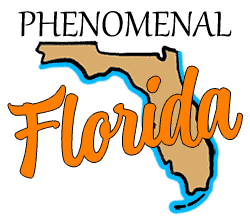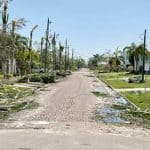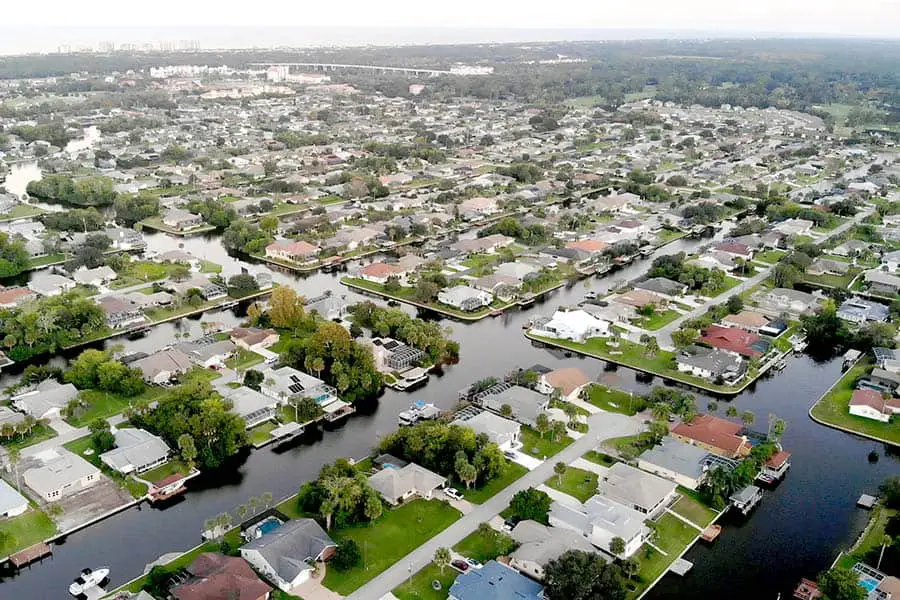
One of Florida’s major attractions is the water. People love the sandy beaches, the beautiful ocean, and the lakes and streams that make this state an outdoorsman’s paradise. But, in addition to these more conventional bodies of water, Florida has a lot of canals. Which leads people to wonder why does Florida have so many canals?
Florida’s system of canals serves several critical purposes for the state, including flood control, drainage, irrigation, and even recreation. In addition, without canals, much of Florida would be unusable for humans, as it would be prone to floods and other significant problems.
So how many canals are there in Florida? Are they deep, and do they have alligators in them? Are they suitable for swimming and fishing? In this post, you will learn the answers to these questions and more about Florida’s system of canals.
The Many Canals of the Sunshine State
Canals are artificial waterways dug into the earth to facilitate human control of the flow of water. Water is a crucial resource for any human settlement, whether a camp of early settlers or a modern megacity. Canals can be dug from scratch or can be made by modifying existing waterways such as rivers and streams.
Florida is a watery state, especially in the southern half of the Florida peninsula, and settlers in this state have always needed to have some means to control the natural flow of water. The earliest canals in Florida were constructed more than 1,800 years ago by people living near Lake Okeechobee. These indigenous people used tools to carve canals from the land surrounding the lake and then used the canals for transportation and fishing.
Florida’s agricultural history led to the development of many modern canals. Crops like sugarcane, peanuts, beans, tomatoes, peppers, rice, and even grass (the lawn kind, not the Willie Nelson kind) require extensive use of irrigation systems to water the crops and to ensure that the fields can be adequately drained. Florida’s citrus and cattle industries are also significant users of canals for the same reasons.
Drainage is another major reason for the Sunshine State’s abundance of canals. Despite the sunny reputation, Florida tends to get a lot of rain, sometimes nearly sixty inches a year.
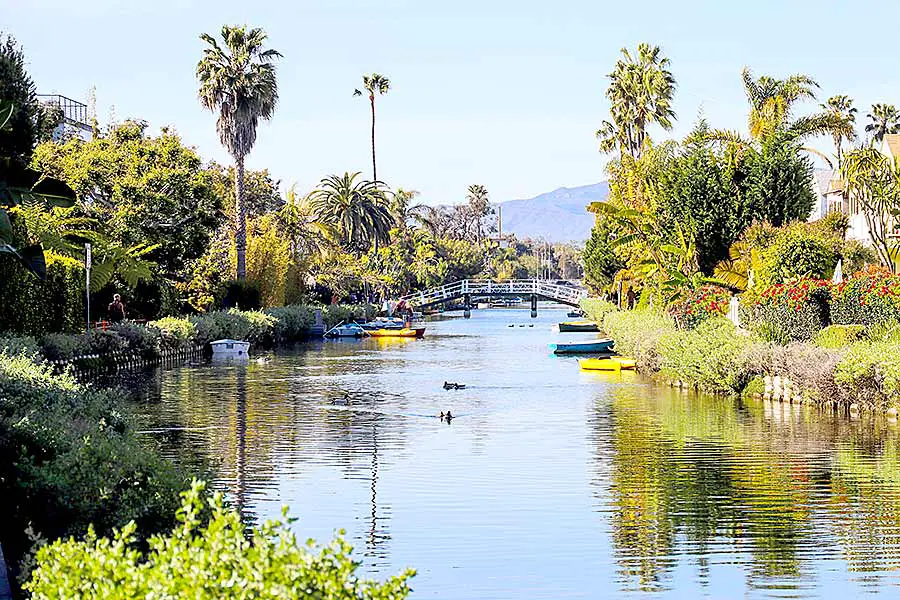
The rain isn’t always evenly spread out either; sometimes, a tropical storm or a thunderstorm will dump a massive amount of water on the land in a short time, which can lead to serious flooding. Canals are an integral part of the drainage system that keeps Florida’s houses, shopping malls, and amusement parks free from flooding.
Many of the canals in Florida are operated by municipal water-management districts, which use an elaborate system of dams, gates, pumps, locks, culverts, and weirs to prevent floods.
Before the development of this modern canal system, flooding in south Florida was a frequent cause of property damage and loss of life. It might not be the most glamorous use of tax dollars, but waterway management is crucial for everybody who lives in Florida.
Florida’s canal system is also a major source of recreation. Anglers love to fish for prizes like sunfish and bass in the canals, and boaters make good use of the canals to navigate from place to place. In fact, homes on canals are highly desirable in Florida, as they are often fitted with docks so mariners can live away from the shore but still enjoy easy access to the water.
Are Florida Canals Man-made?
By definition, canals are man-made waterways. However, many canals in Florida incorporate naturally occurring features. Most canals begin or end with naturally occurring waterways like rivers or lakes. Florida’s canals usually host game fish. In more rural portions of the canals, they become indistinguishable from natural channels, often supporting their own little ecosystems of reptiles, fish, birds, and mammals.
Phenomenal Florida Fun Fact: The Okeechobee Waterway is a 154-mile long canal that connects Florida’s Atlantic and Gulf coasts and is navigable by boats! The canal begins in Stuart on the Atlantic coast and discharges into the Gulf near Fort Myers.
How Many Canals are in Florida?
The Florida Department of Environmental Protection dictates that the state be broken into five water management districts. Each of these districts is responsible for the canals in their jurisdiction. For example, the South Florida Water Management District alone has more than 2,200 miles of canals, which include 621 culverts, 778 water control structures, 84 pumping stations, and more than 3,500 water monitoring sites. Modern canals are complex marvels of engineering.
An exact count of canals in Florida is hard to find. The rich and complicated history of Florida and the fact that many canals may exist on private agricultural land makes a precise count challenging, at best. However, public records show that there are at least 245 distinct canals in the state of Florida.
Other Posts of Interest
- Where Is The Best Place To Find Shark’s Teeth In Florida?
- Are There Deer In Florida?
- Does Florida Have Bayous?
- Why Are The Florida Keys Called Keys And Not Islands?
Are Florida Canals Saltwater?
Florida’s canals often connect freshwater and saltwater together. For example, a canal might run from an inland lake to the Gulf of Mexico or feed into the Everglades. As a result, fishermen often find themselves catching freshwater fish and saltwater fish out of the same canal on different days. In general, the closer a canal is to the ocean, the more brackish the water is, and the further away from the ocean, the fresher the water is.
Do Canals in Florida Flood?
In cases of severe weather, it is possible for canals in Florida to flood. However, the engineers and civil servants who manage Florida’s canals take aggressive measures to prevent flooding. For example, when tropical storms threatened south Florida with heavy rains, the local water management district proactively pumps water out of the canals to reduce water levels in anticipation of the coming storms.
Florida’s canals are also designed to minimize flooding. The material excavated from the ground to make canals is often piled into berms alongside them, giving extra flood protection to areas around the canals. In addition, water management personnel frequently patrol the canals to find and remove potential obstructions that could lead to flooding. While the canals certainly can flood, it is not a common occurrence.

How Deep are Florida Canals?
Most of Florida’s canals are somewhere between six and fifteen feet deep. Older canals are often more shallow. The depth of canals may also vary depending on local conditions: heavy rains or drought can affect the water level in canals, and water management districts have a lot of complex machinery that can raise and lower water levels.
It is important to note that Florida’s canals are generally deep enough to drown in. If you don’t know how deep a canal is, you should assume the water is over your head.
Are Florida Canals Safe to Swim In?
While the canal’s water might look cool and tempting, especially on a hot Florida day, you should not swim in the canals in Florida. First, canals are not designed for swimmers: they are designed to move water. Second, canals are built with steep sides, and the sides often do not have good traction. This feature means that once you’re in the water, you may have a hard time getting back out of it.
Florida’s canals can also contain unseen hazards. For example, because canals carry rainwater and floodwater, it’s possible that the canal water may be contaminated with agricultural runoff or debris.
Unfortunately, some canals end up being used as dumping grounds, and you might find broken glass, metal, or even whole cars in the canal.
Finally, canals in Florida have many hidden inlets, outlets, culverts, pumps, and other machines that can generate invisible currents. It is possible for some of these to suck swimmers under the water. So do not swim in the canals in Florida.
Are There Alligators in Florida Canals?
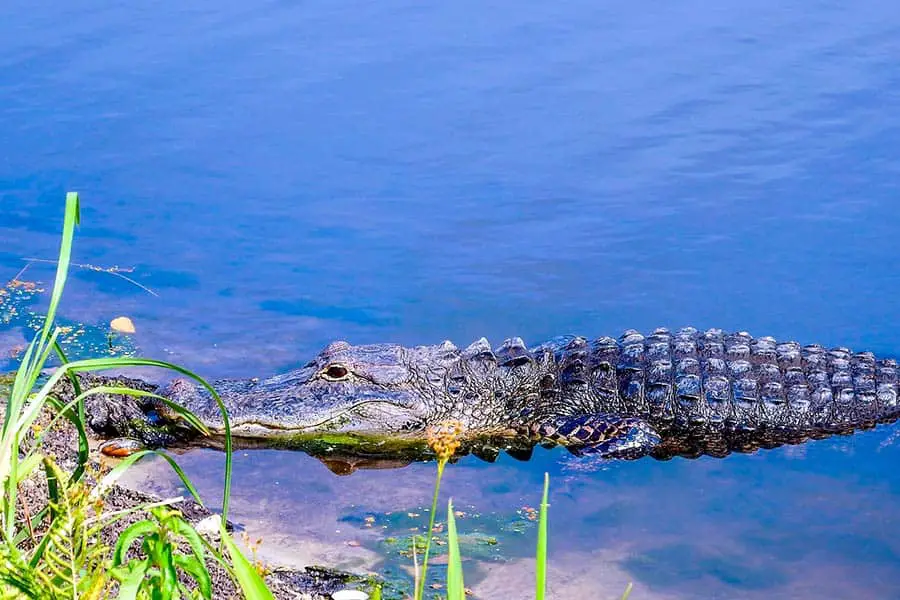
Any Floridian will tell you that a good rule of thumb in Florida is to assume that any body of water has an alligator in it. This rule includes canals! In 2010, a 600-pound alligator was removed from a Cape Coral canal. So it’s safe to presume that there is an alligator in any given canal. Therefore if you do see one of our fine reptilian friends lurking in your local canal, give it a friendly wave and keep your distance.
Are There Sharks in Florida Canals?
While not as common as alligators, there have been many recent and credible reports of sharks in some Florida canals. Red tide events have caused many sharks to seek refuge in South Florida canals. Sharks do not usually enter Florida’s canal network without the red tide, but it isn’t unheard of for boaters or anglers to spot a bull shark in a canal.
Florida’s Canals: A Legacy of Human Ingenuity
Florida’s extensive network of canals serves many vital purposes, including drainage, irrigation, and recreation. In addition, the canals are a testament to the ingenuity and drive of the people of Florida, all the way from the early settlers who dug canals into Lake Okeechobee to the modern-day engineers running the waterworks in each Water Management District. Without the extensive network of canals, much of the Sunshine State would not be developed and habitable.
Next time you come to the Sunshine State, you might consider taking a few moments to marvel at these simple yet amazing waterways that have changed the face of this beautiful state.
